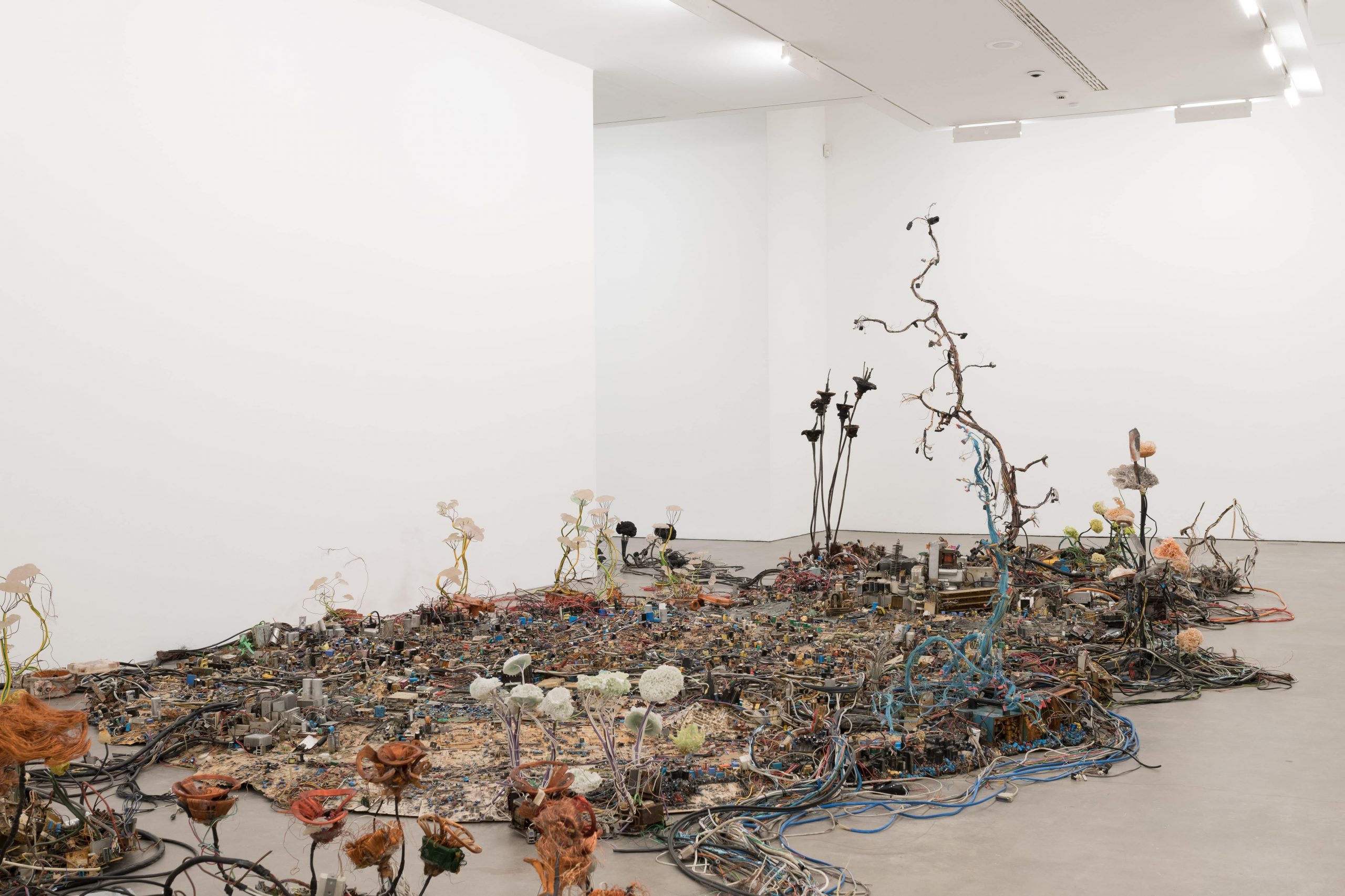
Culture Editor Nadia Sommella reviews the latest exhibition at IKON gallery which ‘tackles serious and relevant issues such as the climate crisis and consumerism’ all with a sense of humour
Don’t be fooled by the exhibition title, because fun is quite an apt term to describe the experience of visiting the latest project at Brindley Place’s IKON gallery, a survey of the work of Czech artist Krištof Kintera. The artist has a unique sense of humour through which he tackles serious and relevant issues such as the climate crisis and consumerism.

Kintera works primarily in sculptural form, utilising discarded technological materials to create fantastical post-apocalyptic forms charged with energy. The exhibition is a sensory overload, and you are met at the door with a polite warning about loud noise and flashing lights. The hum of electricity follows you through the building, whilst the random banging caused by artworks such as ‘Revolution (2005)’ creates a sense of construction noise that mimics the chaotic ‘progress’ of the modern metropolis reflected in Kintera’s cityscapes. The hum of electricity follows you through the building
Paint and pastel may be the traditional media used for artistic expression, but for Kintera the world is his playground and what many might consider discarded junk is his toolbox. Artworks are built out of anything from old phones and batteries to electrical cables, wooden brooms and lamps. The artist’s use of technology to create seemingly natural subject matter, (think flowers blooming out of circuit boards and animals made from copper wire), brings forth the ever-present tension between these two juxtaposed themes. On one hand we might see how nature is being replaced and destroyed by our obsession with innovation and excessive consumption, all the while on the other hand we are being shown the similarities between technology and nature, and how one can facilitate the other.
For Kintera the world is his playground and what many might consider discarded junk is his toolbox
The technique of reusing discarded objects also reminds the viewer of the prevalence of human-produced waste and its negative impact on the environment. In particular, electronic waste is becoming its own epidemic as we as a society constantly search for the next new thing, and mountains of obsolete technology litter the landscape like something out of Wall-E.
Like most galleries in the post-COVID world we now live in, IKON is running the exhibition with a one-way system. We are first met with the work ‘Postnaturalia Laboratory,’ which is almost like a recreation of the artist’s studio. This gives the viewer a visual insight into the artist’s thought process and the way his ideas are turned into finished artworks.
The work the title refers to, ‘Postnaturalia,’ dominates the first-floor galleries, sprawling across the space like a regenerating organism. The work, made from Kintera’s signature use of e-waste, resembles a dystopian city crumbling into dust. It is a seminal work from the artist that is revisited later in the exhibition in video-form. The film, taken via drone-like shots hovering above the artwork, encourages us to look from new perspectives and in greater detail.

The second floor is primarily filled with what Kintera refers to as his ‘Drawings,’ although they more closely resemble sculptures trying to climb out of the two-dimensional canvas which confines them. These occupy every nook and cranny of the walls of gallery four and were created over a period of thirteen years, extending all the way up to the present day. The ‘Drawings’ combine slogan and satire with found objects to create a humorous display of social commentary, saturated in the artist’s unique wit.

With a mix of large-scale expansive works and smaller hidden gems found tucked around corners or perching on staircases, this exhibition is perfectly balanced and keeps you excited for what is coming next. The use of motion sensors, setting an artwork off as you approach it, makes the viewer an active participant in the art rather than a passive bystander. This highlights our own active role within the systems Kintera explores, be it the natural world or manmade machinery, and suggests to me that whilst we are the problem, we are also the solution.

Kintera returns to the same themes throughout his artistic practice; the dichotomy between nature and technology shown through works like ‘Postnaturalia,’ our excessive and unsustainable growth and consumption exemplified in works such as ‘Tower of Unsustainable Development,’ and feelings of panic and frustration illustrated by ‘Nervous Trees’ that shake as you near them. These are themes that have never been more relevant, as we all experience our own sort of panic, longing for the outdoors whilst simultaneously relying increasingly on the technology that is destroying it. If you do plan on braving it and leaving your house, why not visit IKON and experience the magic of Krištof Kintera’s work for yourself, there is no better antidote to fear than laughter. There is no better antidote to fear than laughter
The exhibition runs until 22nd November 2020, book your free tickets in advance at https://www.ikon-gallery.org/event/kristof-kintera/
Read more about visual art:
Comments